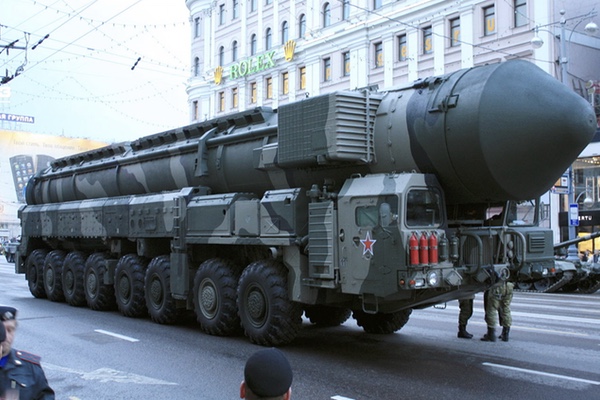After the Iran Nuclear Agreement: Will the Nuclear Powers also Play by the Rules?

"Тягач МЗКТ-79221 (комплекс Тополь-М)" by ru:Участник:Goodvint - Own work. Licensed under CC BY-SA 3.0 via Commons.
When all is said and done, what the recently-approved Iran nuclear agreement is all about is ensuring that Iran honors its commitment under the nuclear Non-Proliferation Treaty (NPT) not to develop nuclear weapons.
But the NPT—which was ratified in 1968 and which went into force in 1970—has two kinds of provisions. The first is that non-nuclear powers forswear developing a nuclear weapons capability. The second is that nuclear-armed nations divest themselves of their own nuclear weapons. Article VI of the treaty is quite explicit on this second point, stating: “Each of the Parties to the Treaty undertakes to pursue negotiations in good faith on effective measures relating to cessation of the nuclear arms race and to nuclear disarmament, and on a treaty on general and complete disarmament under strict and effective international control.”
What has been the record of the nuclear powers when it comes to compliance with the NPT?
The good news is that there has been some compliance. Thanks to a variety of nuclear arms control and disarmament agreements negotiated among the major nuclear powers, plus some unilateral action, the world’s total nuclear weapons stockpile has been reduced by more than two- thirds.
On the other hand, 45 years after the NPT went into effect, nine nations continue to cling to about 16,000 nuclear weapons, thousands of which remain on hair-trigger alert. These nations not only include the United States and Russia (which together possess more than 90 percent of them), but Britain, France, China, Israel, India, Pakistan, and North Korea. If their quarrels—of which there are many—ever get out of hand, there is nothing to prevent these nations from using their nuclear weapons to lay waste to the world on a scale unprecedented in human history.
Equally dangerous, from the standpoint of the future, is that these nations have recently abandoned negotiating incremental nuclear disarmament agreements and have plunged, instead, into programs of nuclear weapons “modernization.” In the United States, this modernization—which is projected to cost $1 trillion over the next 30 years—will include everything from ballistic missiles to bombers, warheads to naval vessels, cruise missiles to nuclear weapons factories. In Russia, the government is in the process of replacing all of its Soviet era nuclear weapons systems with new, upgraded versions. As for Britain, the government has committed itself to building a new nuclear-armed submarine fleet called Successor, thereby continuing the nation’s nuclear status into the second half of the twenty-first century. Meanwhile, as the Arms Control Association recently reported, China, India, and Pakistan “are all pursuing new ballistic missile, cruise missile, and sea-based delivery systems.”
Thus, despite the insistence of the nuclear powers that Iran comply with the NPT, it is pretty clear that these nuclear-armed countries do not consider themselves bound to comply with this landmark agreement, signed by 189 nations. Some of the nuclear powers, in fact, have been quite brazen in rejecting it. Israel, India, and Pakistan have long defied the NPT—first by refusing to sign it and, later, by going ahead and building their own nuclear weapons. North Korea, once a signatory to the treaty, has withdrawn from it.
In the aftermath of the Iranian government’s agreement to comply with the treaty, would it not be an appropriate time to demand that the nuclear-armed nations do so?
At the least, the nuclear nations should agree to halt nuclear weapons “modernization” and to begin negotiating the long-delayed treaty to scrap the 16,000 nuclear weapons remaining in their arsenals. Having arranged for strict verification procedures to ensure that Iran does not develop nuclear weapons, they should be familiar with procedures for verification of their own nuclear disarmament.
After all, isn’t sauce for the goose also sauce for the gander?